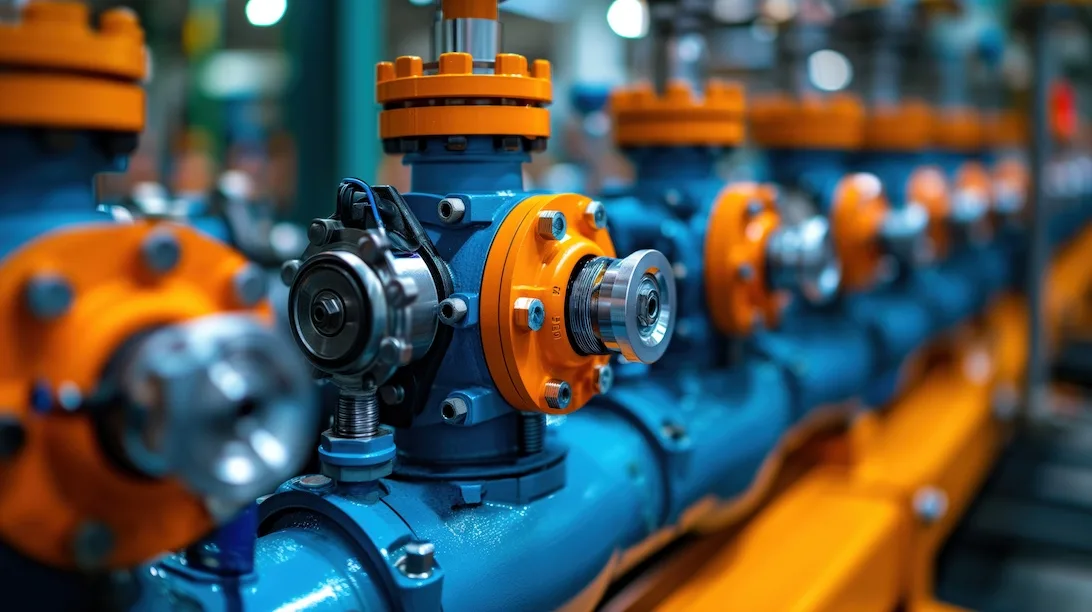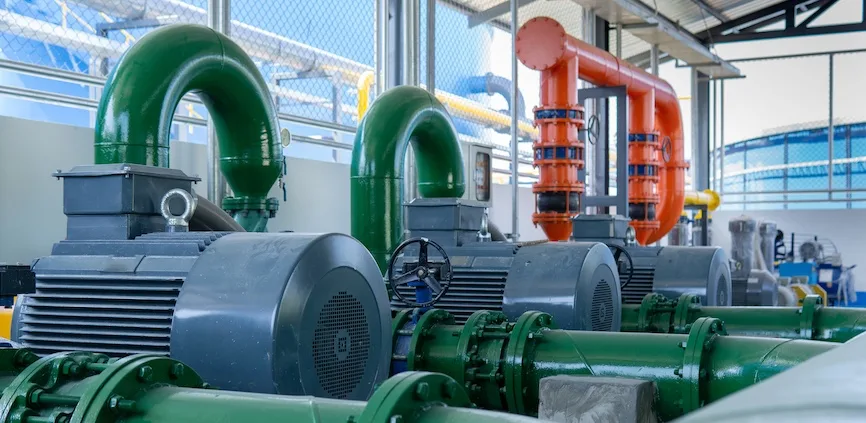Water treatment facilities demand robust and efficient equipment to ensure a reliable water supply. Diaphragm pumps have emerged as an asset in optimizing these operations. With their unique design and capabilities, these pumps offer significant advantages in various stages of water treatment.
This article explores how diaphragm pumps contribute to enhanced efficiency and performance in the water treatment industry.
What are Diaphragm Pumps?
Diaphragm pumps are a type of positive displacement pump that use a combination of the reciprocating action of a diaphragm and suitable valves on either side of the diaphragm to pump a fluid. These pumps are known for their versatility, durability, and efficiency, making them ideal for a wide range of applications, including water treatment facilities, chemical processing, and food and beverage production.
Role Of Diaphragm Pumps In Water Treatment
Diaphragm pumps play a crucial role in enhancing the efficiency of water treatment facilities. Here are several ways they contribute to this improvement:
1. Precise Metering and Dosing
Diaphragm pumps excel in providing precise control over the volume of water and chemicals being pumped. This level of accuracy is crucial in water treatment facilities, where the precise dosing of chemicals such as chlorine, acids, and coagulants is required. Accurate metering ensures that the treatment process is both effective and economical, preventing the wastage of expensive chemicals.
Moreover, it minimizes the risk of overdosing, which can degrade water quality and harm infrastructure. By ensuring the right amount of chemicals are added at the right time, diaphragm pumps help maintain optimal treatment conditions and enhance overall system efficiency.
2. Handling of Various Fluids
Water treatment facilities must handle a diverse range of fluids, from abrasive slurries and viscous liquids to highly corrosive chemicals. Diaphragm pumps are designed to manage these challenging fluids effectively due to their robust construction and the use of materials that resist corrosion and abrasion.
This versatility reduces the need for multiple types of pumps, thereby simplifying maintenance and operational protocols. By pumping various fluids without significant wear and tear, diaphragm pumps extend the lifespan of the equipment and ensure consistent performance under varying conditions.
3. Energy Efficiency
Diaphragm pumps are recognized for their energy-efficient operation. They typically consume less energy compared to other pump types, particularly when handling viscous or particulate-laden fluids. This efficiency is a result of their design, which minimizes energy loss during the pumping process.
For water treatment facilities, this means lower operational costs and a reduced environmental footprint. Energy savings also contribute to sustainability goals, making diaphragm pumps an attractive option for facilities aiming to reduce their energy consumption and carbon emissions.
4. Low Maintenance Requirements
The design of diaphragm pumps minimizes the number of moving parts that come into contact with the pumped fluid, significantly reducing wear and tear. This leads to longer service intervals and less downtime for maintenance.
Furthermore, the modular design of many diaphragm pumps allows for easy replacement of parts, further reducing maintenance time and costs. The low maintenance requirements contribute to the overall reliability and availability of the water treatment system, ensuring that the facility can operate continuously and efficiently.

5. Self-Priming Capabilities
Diaphragm pumps have the advantage of being self-priming, which means they can start pumping without needing to be pre-filled with water. This capability is particularly beneficial in scenarios where the pump may need to be started and stopped frequently.
Self-priming simplifies the operation and reduces the risk of damage caused by dry running. This feature enhances the operational flexibility of water treatment facilities, allowing them to respond quickly to changing conditions without compromising the integrity of the pumping system.
6. Leak-Free Operation
A key feature of diaphragm pumps is their leak-free operation. This is especially important when dealing with hazardous or corrosive chemicals, as it prevents environmental contamination and protects workers from exposure to harmful substances.
The sealed design of diaphragm pumps ensures that no fluid escapes during the pumping process, maintaining a safe and compliant operation. This leak-free characteristic is crucial for adhering to stringent environmental and safety regulations, thereby enhancing the facility’s overall safety profile.
7. Versatile Installation Options
Due to their compact and adaptable design, diaphragm pumps offer versatile installation options. They can be installed in various orientations and locations within a water treatment facility, allowing for optimal placement within the process flow.
This flexibility facilitates the integration of diaphragm pumps into existing systems and can help streamline the treatment process. By optimizing the placement of pumps, facilities can achieve better operational efficiency and more effective treatment outcomes.
8. Consistency and Reliability
Diaphragm pumps’ consistency and reliability are vital for maintaining the continuous operation required in water treatment processes. They deliver steady flow rates, ensuring that the treatment process remains stable and effective.
This reliability reduces the likelihood of interruptions, which can compromise water quality and treatment efficiency. By providing consistent performance, diaphragm pumps help ensure that water treatment facilities meet regulatory standards and deliver safe, clean water to their communities.
Conclusion
As the demand for clean water continues to rise, the implementation of diaphragm pumps emerges as a strategic choice for enhancing operational performance and ensuring a sustainable water supply. Their unique design and capabilities offer substantial advantages in terms of efficiency, reliability, and versatility.

